Acinetobacter baumannii and Klebsiella pneumoniae Isolates Obtained from Intensive Care Unit Patients in 2024: General Characterization, Prophages, Depolymerases and Esterases of Phage Origin
- PMID: 40431639
- PMCID: PMC12115436
- DOI: 10.3390/v17050623
Acinetobacter baumannii and Klebsiella pneumoniae Isolates Obtained from Intensive Care Unit Patients in 2024: General Characterization, Prophages, Depolymerases and Esterases of Phage Origin
Abstract
Acinetobacter baumannii and Klebsiella pneumoniae are significant nosocomial pathogens worldwide. In this study, the general characterization of A. baumannii and K. pneumoniae isolates obtained from the blood of intensive care unit patients of the multidisciplinary scientific and practical center of emergency medicine from January to September 2024 was performed. Prophage regions and prophage-derived tailspike polysaccharide-depolymerizing or -modifying enzymes within these isolates were identified and characterized in detail using a refined workflow. The protocol, encompassing a comprehensive survey of all predicted bacterial proteins, revealed an average of 6.0 prophage regions per Acinetobacter baumannii genome, including regions putatively derived from filamentous phages, and 4.8 prophage regions per Klebsiella pneumoniae isolate. Analysis of these putative prophage regions indicated that most were related to previously isolated, yet unclassified, temperate phages infecting A. baumannii and K. pneumoniae. However, certain identified sequences likely originated from phages representing novel groups comparatively distant from known phages.
Keywords: Acinetobacter baumannii; Klebsiella pneumoniae; genomes; prophage regions; tailspike depolymerase; tailspike esterase.
Conflict of interest statement
The authors declare no conflicts of interest.
Figures




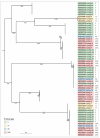
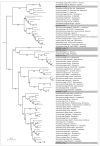
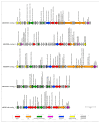


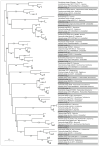



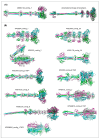
Similar articles
-
Filamentous prophages in the genomes of Acinetobacter baumannii from egypt: impact on biofilm formation and the potential to induce enterotoxicity.BMC Microbiol. 2025 Jul 23;25(1):449. doi: 10.1186/s12866-025-04177-z. BMC Microbiol. 2025. PMID: 40702445 Free PMC article.
-
In silico and in vitro comparative analysis of 79 Acinetobacter baumannii clinical isolates.Microbiol Spectr. 2025 Jul;13(7):e0284924. doi: 10.1128/spectrum.02849-24. Epub 2025 May 16. Microbiol Spectr. 2025. PMID: 40377313 Free PMC article.
-
Bacteriophage and Phage-Encoded Depolymerase Exhibit Antibacterial Activity Against K9-Type Acinetobacter baumannii in Mouse Sepsis and Burn Skin Infection Models.Viruses. 2025 Jan 6;17(1):70. doi: 10.3390/v17010070. Viruses. 2025. PMID: 39861859 Free PMC article.
-
Prevalence of colistin resistance in clinical isolates of Acinetobacter baumannii: a systematic review and meta-analysis.Antimicrob Resist Infect Control. 2024 Feb 28;13(1):24. doi: 10.1186/s13756-024-01376-7. Antimicrob Resist Infect Control. 2024. PMID: 38419112 Free PMC article.
-
"One Health" Perspective on Prevalence of ESKAPE Pathogens in Africa: A Systematic Review and Meta-Analysis.Pathogens. 2024 Sep 12;13(9):787. doi: 10.3390/pathogens13090787. Pathogens. 2024. PMID: 39338978 Free PMC article.
References
-
- Runtuvuori-Salmela A., Kunttu H.M.T., Laanto E., Almeida G.M.F., Mäkelä K., Middelboe M., Sundberg L.-R. Prevalence of genetically similar Flavobacterium columnare phages across aquaculture environments reveals a strong potential for pathogen control. Environ. Microbiol. 2022;24:2404–2420. doi: 10.1111/1462-2920.15901. - DOI - PMC - PubMed
Publication types
MeSH terms
Substances
Associated data
- Actions
- Actions
Grants and funding
LinkOut - more resources
Full Text Sources

